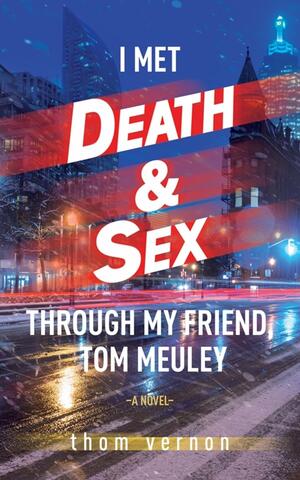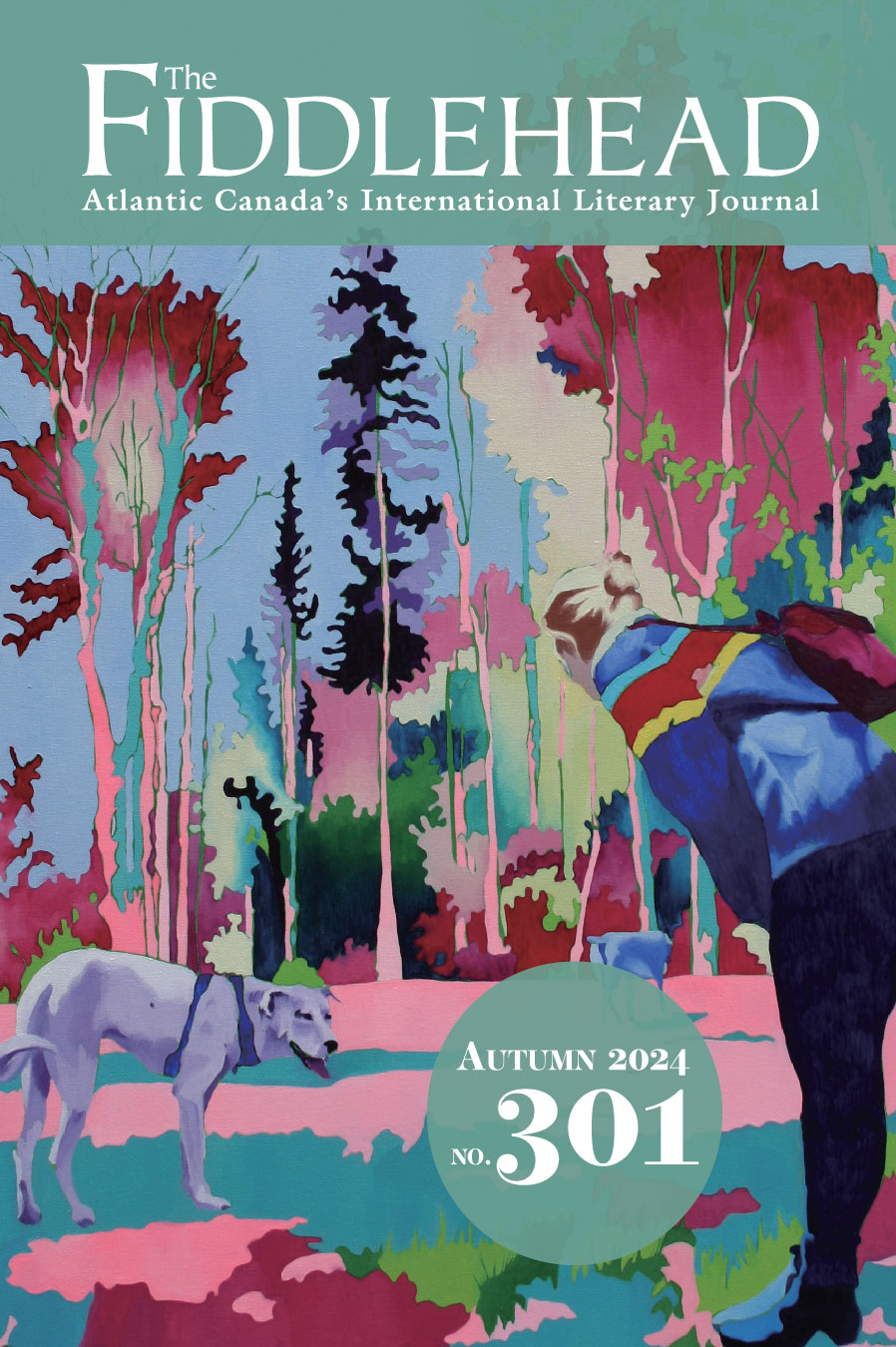
thom vernon invites readers to meet sex and death
I Met Death & Sex Through My Friend, Tom Meuley, thom vernon. Guernica Editions, 2024.
Wildly audacious. Hilarious yet devastating. Punchy and raw. I’ve never read a novel like thom vernon’s I Met Death & Sex Through My Friend, Tom Meuley. As a novelist, vernon breaks all the rules because he knows them. It’s why the story leaps off the page. This novel begs to be a film, and I shouldn’t be surprised considering vernon’s backstory of being an actor-turned-writer.
vernon teaches creative writing at Thompson Rivers University but has been teaching screenwriting, fiction, and critical writing for years. He’s written three feature screenplays, a short, and most recently, two novels. With a PhD in English Literature in Creative Writing, vernon continues to do ongoing scholarly work and has a pretty stellar Hollywood acting career for such a prolific writer. He appeared in the Fugitive, Seinfeld, The Jeff Foxworthy Show, General Hospital, and more. vernon is also an avid runner, whose intense pacing is reflected in his prose. Like feet pounding the pavement one after the other, his writing is fast-paced, steady and rhythmic.
Let’s begin with the title. I Met Death & Sex Through My Friend, Tom Meuley mentions both sex and death (and the author’s first name is also the character’s name — which makes me wonder whether thom is Tom, or not? Does the author want us to ask this? Or am I reading too much into it?), and I am instantly propelled as a reader. vernon has placed two taboos of society smack-dab on the cover of his book. Sex and death drive the novel — as they do in real life — which is ballsy like the novel itself. Much like the long-winded title suggests, a lot goes down in these 400 pages. In this dark comedy that takes place over twenty-four hours in downtown Toronto, we meet Albert, a high-school teacher who coerces his student Tom Meuley to assist in his suicide. This launches Tom, his best friend Milk and his bulimic mother Sessy, as well as a Toronto Police officer named Ton’ to try and outrun a blizzard in Toronto as well as their own demons. The novel is filled with big life and death energy. Time and space collide and contort. Sentence-fragments, perspectives and tenses shift. vernon’s work is pithy.
At moments while reading, I couldn’t help but question if vernon was fooling with me. That’s the magic of this novel and its incredibly rich cast of characters that propel the story’s momentum forward. There’s an urgency in this novel which takes place entirely in twenty-four hours. vernon’s staccato-like poetics are like a sucker punch to the gut. I laughed out loud, gasped, and couldn’t stop shaking my head, asking myself: how did vernon actually write this?
The novel’s table of contents “The Day,” is divided into seven sections: “The Morning of,” “the Afternoon of,” “The Evening of,” “The Night of,” “After the Midnight of,” “The Wee Hours of,” and “The Dawn of.” In “The Morning of,” readers meet the beautiful and tragic character Sessy — Milk’s mom — who suffers from an eating disorder. A red-haired girl “wiser than her years. The one that everyone goes to with their problems. The one that got others in touch with the truth of the matter” (107).
The truth is subjective throughout the novel, much like Sessy’s binge-purge rituals which are viscerally described throughout the novel. Her bulimia is central to her characterization, but doesn’t define her. The description of food is fantastic. O-yos! vernon has the gift of playful vernacular:\
But, by God, she needed liquid. Her mouth cracked into the earth of sweet Jesus Christ lost in the desert. Very dry. God, she could gag. She got a handful of chocolate O-yos. Take a slug of no-fat soymilk. And another. Christ goddamn. One more. Now, now she could breathe. She pulled her waistband down. Fat-free don’t count. She pulled her tee up, and then down, to fan herself. She deserved a reward. After all that she’d done. All those lemons.” (52)
In the section “The Evening Of,” Albert’s chapter, vernon meditates on the role of a teacher, their bird’s eye view of our future:
“You want to know the future of a country, ask a teacher. They’ll tell you. You want to know your future check out a tenth-grade homeroom. Every 8:35 AM Monday to Friday, your future sits there picking its nose, charging its phone and texting its mom that is staying late to do homework, smoking out and cruising in its limo. That’s the future. Anybody that thinks otherwise hasn’t been paying attention. Your future’s swimming in wet dreams and dodging desks with boners. A teacher’ll tell you what’s to come and who’s going to do what. Take one good look at homeroom and unfurl the days” (125).
Somewhere between the lemons and boners, vernon knows how to pack a lot into a sentence. I’m talking sentences that are sometimes one word — three words, tops. Despite this, vernon doesn’t miss a beat. Without giving away the ending, I can’t get over three words that summarize this dizzying tour de force: “a mark, a scar, a difference.” (442). This book alters what it means to tell a story, redefines the novel and, in its own way, illustrates how we make a difference.
— Shannon Webb-Campbell is of Mi’kmaq and settler heritage. Her books include: the forthcoming Re: Wild Her (Book*hug 2025), Lunar Tides (2022), I Am a Body of Land (2019), and Still No Word (2015).











